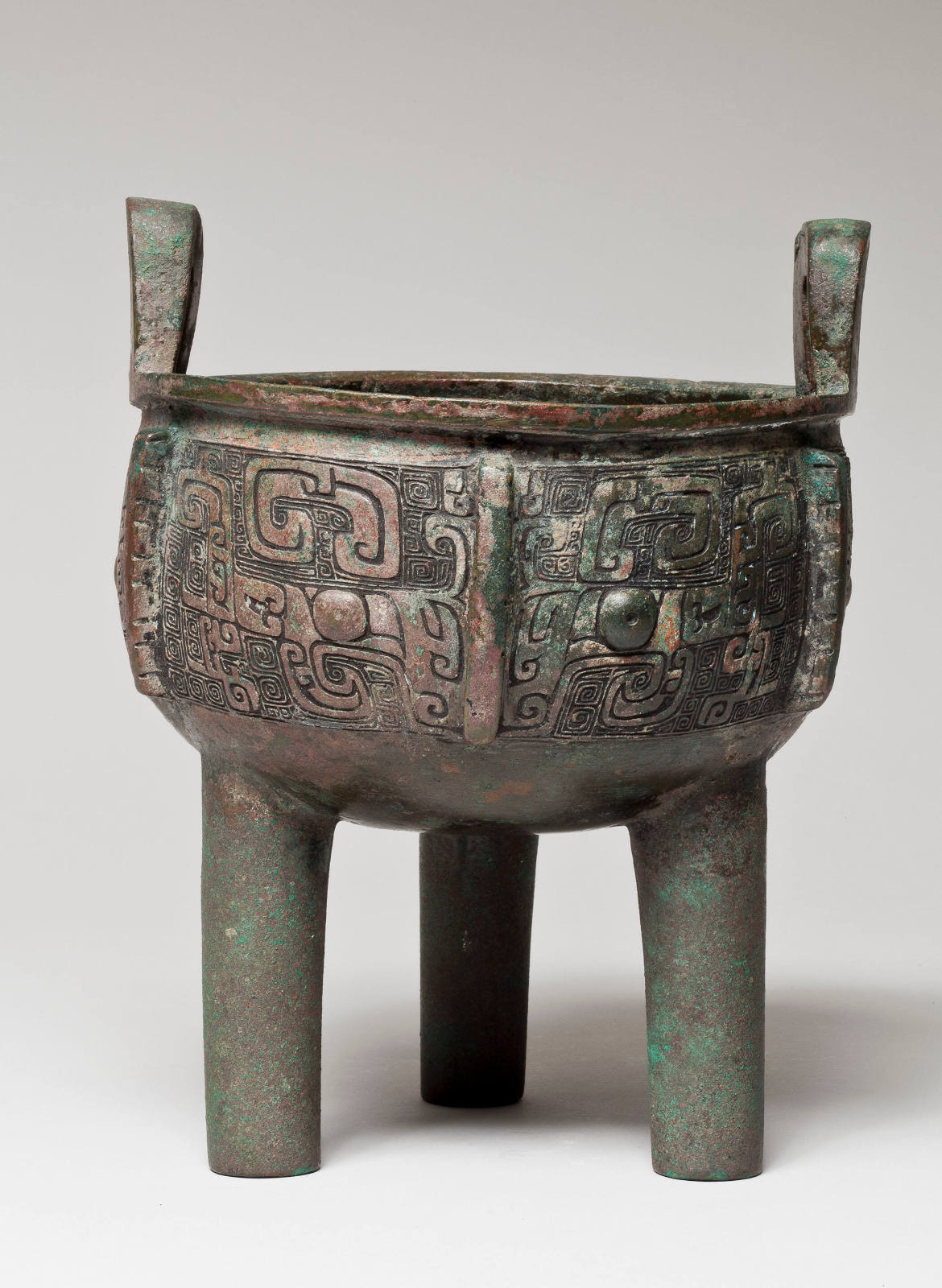Ding (T'ing) (Ritual Cooking Vessel)
Overall (w/out handles): 6 9/16 × 6 1/4 in. (16.7 × 15.9 cm)
As the embodiment of li—a repertoire of rules and codes—bronze vessels are the defining ceremonial objects of early China. Intended for use in the rituals designed to venerate ancestral spirits, vessels such as the ding tripods seen in this case served as the central accessories in both religious and mortuary practices. While the use of ritual objects in bronze spans several thousand years, both their production and usage changed over time. During the Shang period (1600–1040 BCE), bronzes were produced using separate ceramic molds, called piece-cast molding. By the Eastern Zhou period (770–256 BCE), the lost wax process allowed for new technical innovations and increased production.
Furthermore, the significance of the so-called taotie, or ogre mask motif, the preferred decoration on ritual bronzes, also shifted over time. Earlier vessels are noted for a more pronounced depiction of the taotie composed of two opposing dragons in profile spread along the central band adorning the body of the vessel, while this motif on later bronzes tends to be highly abstracted, even unrecognizable.
















